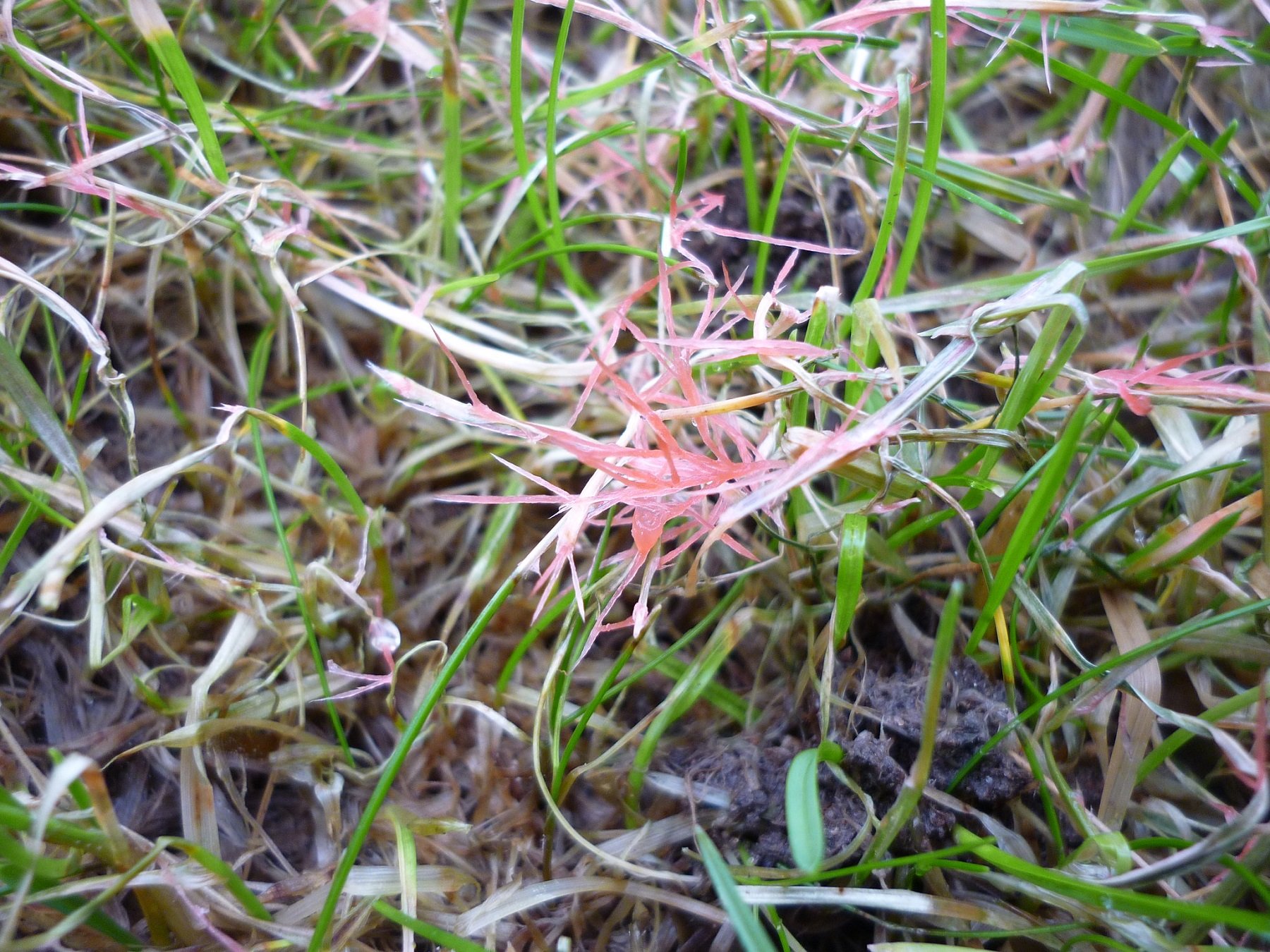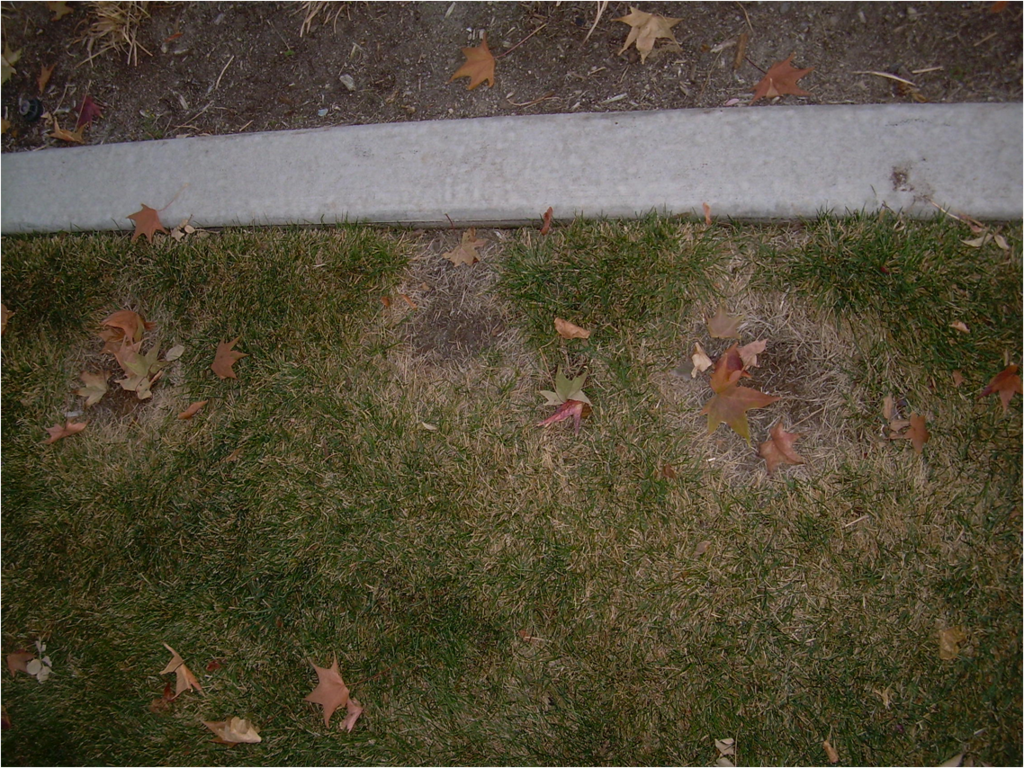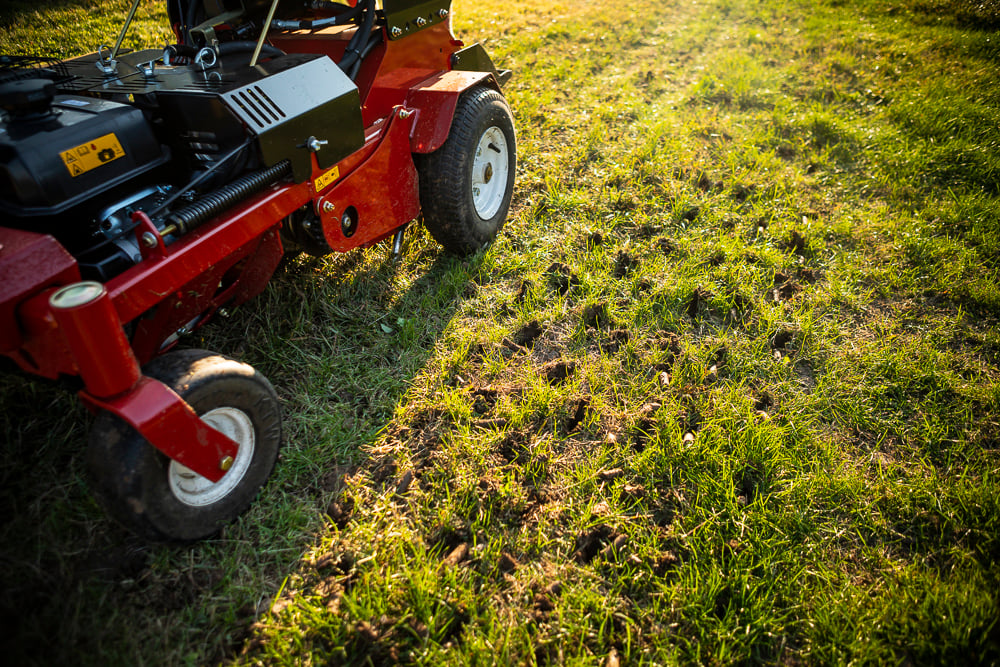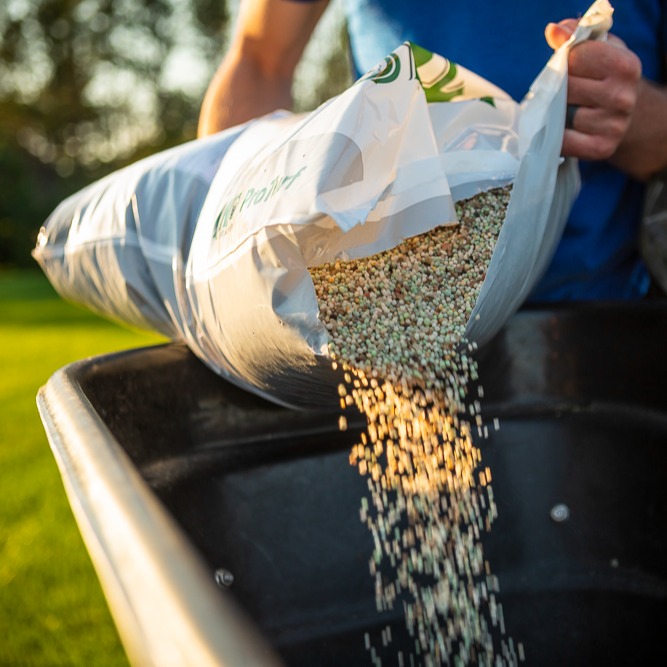First, don’t panic. Lawn fungus can sense fear and will rise up and attack.
Just kidding. That would be a cool horror movie though, right?Lawn fungus isn’t nearly that thrilling. But it’s bad news for your lawn and really bad news if it strikes just when you’re hosting the neighborhood cookout.
What to do if your grass has fungus? Is there lawn fungus treatment?
First, a Fun Look at Fungus
OK, it’s not actually all that fun. But it’s good to know what you’re dealing with out there.
Fungus in grass thrives in the high temperatures and high humidity of summer.
When conditions are right, these lawn invaders can strike fast here in Wisconsin and Minnesota. You can go to bed after happily gazing at your healthy green lawn, then wake up the next morning to a bunch of straw-colored circles or ugly bleached patches in your lawn and suddenly your bowl of Captain Crunch isn’t nearly as tasty.
 It might be Red Thread, which looks like tan, pink, or red circular patches ranging in size from a few inches to two feet in diameter.
It might be Red Thread, which looks like tan, pink, or red circular patches ranging in size from a few inches to two feet in diameter.
Or Dollar Spot, which causes bleached patches ranging from a few inches to a foot in diameter.
Ascochyta Leaf Blight causes large irregular patches of turf to quickly turn straw-brown in color and appear dead. To make matters worse, it’s tricky to pronounce.
Whatever the fungus in your grass, it’s a bummer.
What to do if your grass has fungus?
1. First, Make Sure It’s Actually Fungus
Brown, dead-looking grass could be fungus. Or insect damage. Or drought stress. It can be tricky to tell for sure. Before you assume you need lawn fungus treatment, be sure.
 That’s why it’s great to have a skilled and knowledgeable lawn care expert on board as part of your comprehensive lawn care services in Eau Claire, WI and Minneapolis. They know this stuff and can suggest the right plan of action for whatever’s going on out there.
That’s why it’s great to have a skilled and knowledgeable lawn care expert on board as part of your comprehensive lawn care services in Eau Claire, WI and Minneapolis. They know this stuff and can suggest the right plan of action for whatever’s going on out there.
2. Lawn Fungus Treatment: The Good News
The good news is, lawn fungus often clears up itself if you’re patient. And the grass typically comes back on its own after the fungus disappears. Fungicides can help severe cases of lawn fungus, but lawn disease treatment isn’t always needed.
The other good news is there are a few things you can do to prevent fungus in your grass in the first place. In fact, your best bet to control lawn fungus is to prevent it, with proper lawn care. Which brings us to…
3. Don’t Water Too Much
Don’t water too often — you don’t want your lawn to be too wet. That just invites lawn diseases and encourages them to spread.
Water early in the day, before sunrise, so your lawn has time to fully dry before evening.
4. Help Prevent Fungus in Grass with Aeration
Fungus loves moisture, so proper drainage is key to preventing lawn diseases. Aeration to the rescue. 
Lawn aeration uses a machine to pull out plugs of soil, creating spaces so that air and water can penetrate, which also leads to healthier roots.
Healthier roots make for a healthier, thicker lawn, better able to resist diseases and tolerate summer’s heat and drought.
Lawn aeration also helps break down thatch, that layer of dead grass and stems that sits between the grass blades and the soil and encourages fungus in your grass.
5. Fertilize for a Healthy Lawn
Fertilize your lawn well in spring through fall so your lawn is healthy and has a better chance of surviving fungus in your grass and a multitude of other stresses. 
Always opt for granular lawn fertilizer, which is more expensive than the more common liquid stuff, but it breaks down slowly, giving you consistent benefits from fertilization. A well fed, thriving lawn can better resist lawn fungus.
6. Mow Tall
Keep your grass height between 3 and 4 inches and avoid mowing during wet weather.
Mowing short looks cool at the golf course but actually hurts your grass.
When you mow, you’re removing a portion of the leaf surface that creates food through photosynthesis.
Take off too much, and you’re starving your grass.
When you’re really hungry, are you working your best? Hungry grass won’t be its best, either, and will be more susceptible to lawn diseases.
Fungus in Your Grass? Call RainMaster
You’d think a word that actually contains the word “fun” would be more, well, fun. Weird.
But nobody wants to see their healthy green lawn suddenly turn into big bleached circles or brown, dead-looking patches.
And of course lawn fungus attacks In the height of summer, just when you want to enjoy your yard the most. Not fun at all.
Help keep lawn fungus from creeping in by setting up your lawn for success, with proactive lawn care services in Eau Claire, WI and Minneapolis that includes a custom nutrition plan and aeration for your lawn.
The roots will be nourished, the soil will be packed with nutrients and drain better, and your lawn will be thick and healthy, so lawn diseases will have a harder time taking hold.
Also, consider a regular irrigation maintenance program, to make sure your sprinkler system delivers the right amount of water at the right time so you're not encouraging lawn diseases.
Ready for a lawn care program to fake out the fungus? Request a quote today! We’ll review your lawn care options together so you can make a great choice. Then, you can finally enjoy your lawn and stop worrying about it.
Image sources: red thread, dollar spot, necrotic ring spot



